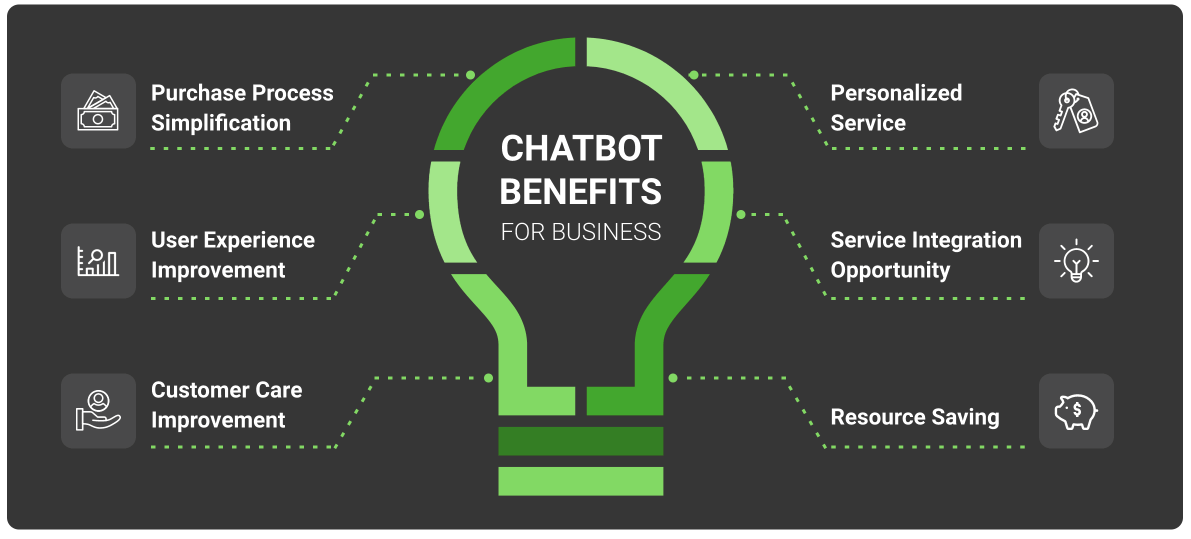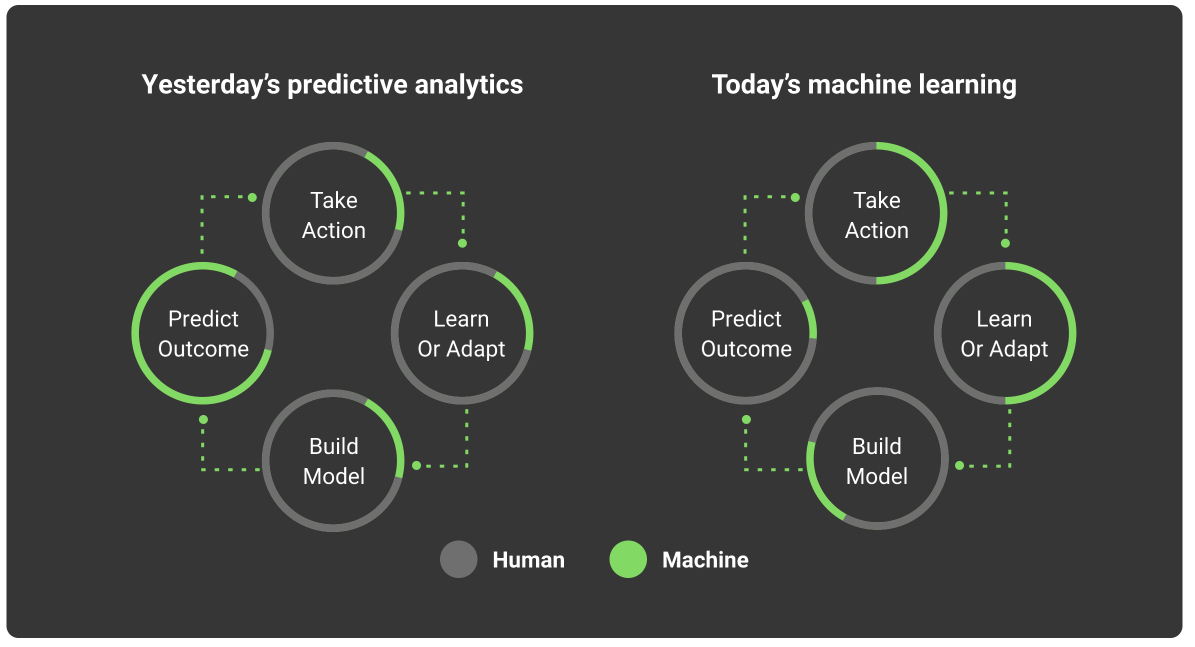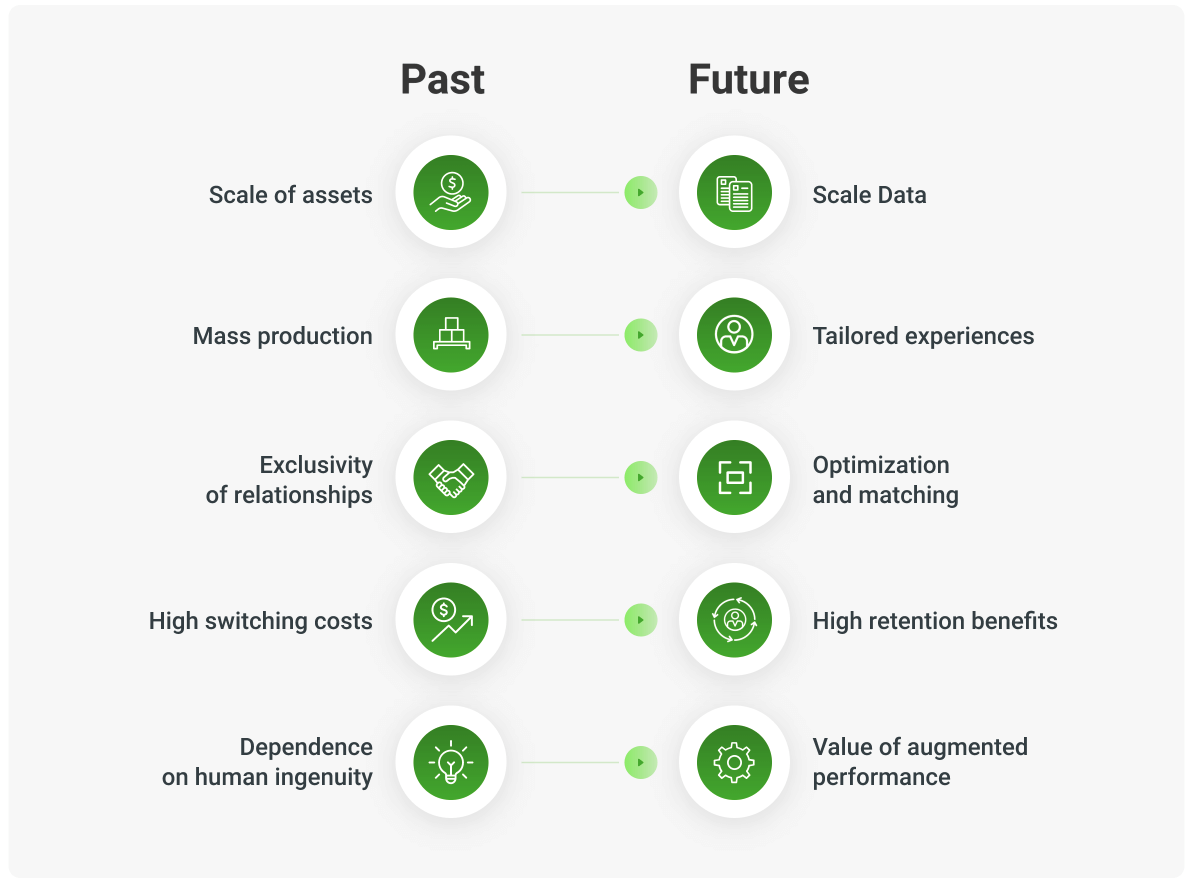Time is one of the most valuable resources ever. Every technology that helps people (i.e., consumers) save their time is doomed to success. Both Machine Learning and Finance are about enormously huge volumes of data. The speed and accuracy of its processing are decisive for the capabilities of every market player. So, how is Machine Learning used in Finance and Banking? Here are 5 cases worth your attention.

Case #1: Personalized banking
Personalization is the key trait for building customer loyalty and trust in Finance. Transparency and close attention to customer needs are highly valued. The most in-demand application of Machine Learning in Banking and Finance is personalized support and assistance services.
Machine Learning algorithms work as follows:
The algorithm collects the customer’s historical data;
Defines the specific patterns of customer‘s behavior;
Detects customer preferences;
Suggests recommendations for further customer actions;
Records new patterns and corrects the existing rules.
Machine Learning technology is used to create personal assistants and customer support chat-bots in conjunction with other AI approaches.
For example, Kasisto Company, based in New York, has created KAI, a platform for banking client services. This AI-based platform is an alternative to common call centers. It features many self-service options and a chat-bot that gives individual recommendations based on the customer’s personal data, helping with different daily financial decisions.

In a study by Accenture, 54% of nearly 33,000 bank customers state they want tools for budget monitoring and financial adjustments to real-time spending. 41% of respondents wish to get computer-generated banking advice.
Personalized banking engages customers to use more services, stimulating profit growth, and giving insights for further development.
Case #2: Fraud Detection
ML algorithms are widely used for detecting abnormal transaction patterns and sorting fraudulent activity from occasional mistakes and technical issues. Using Machine learning in financial services helps prevent human errors in evaluating potential fraud and enables a much faster reaction to possible threats than human-based systems. ML-based fraud detection mechanisms approach this problem as follows:
Analyze the past behavior of an individual;
Verify the current action according to a predefined set of rules;
If it doesn’t fall into the pattern, the action is alerted as suspicious, enabling fraud prevention mechanisms.
For example, if a customer makes only small purchases for a long time, and suddenly makes some large money transfer, the machine flags this transaction and immediately contacts the customer to verify the identity and confirm his actions.
Mastercard actively uses ML for its “Decision Intelligence” system based on analyzing the patterns from the cardholders’ shopping history and payment habits. This self-learning model detects anomalies that can stay unnoticeable within the human analysis. Moreover, this system helps to solve another problem — false declines. Losses from false declines are more significant compared to fraud activity. Reducing false declines has a positive impact both on overall customer satisfaction and the company’s profit.

Would you like to create an ML-based fraud-free financial application? Entrust this technical challenge to highly qualified KeyUA experts.
Request a QuoteCase #3: Credit Scoring
A huge problem with traditional banking is underserved customers who could not get a loan or credit while being financially reliable enough. And a solution to this problem was (and still is) one of the biggest goals for startups that develop Machine Learning algorithms in Banking.
For example, Lenddo gives the ability to apply for a loan by people without a credit history. A potential borrower has to permit the app to mine data from their web browser history, social media, geo-locations, etc. Based on this information, Lenddo helps banks to identify trustworthy borrowers.
ML-based credit decisions are grounded on analyzing much more metrics to evaluate customer’s paying capacity.

Banks use datasets from utility and telecom providers for training ML models to define credit-worthy borrowers. Within Machine Learning applied to Finance for evaluating paying capacity, consumers get lots of advantages:
More chances to get a loan
Better overall credit history
More financial options available
Better life quality
Another application of Machine Learning in Banking defines a so-called ‘soft’ credit score by microloan companies. They analyze social media data instead of a full credit history to lend small loans for online purchasing. ML algorithms perform basic social media profiles research to verify the borrower. Car loan companies use the same approach. For instance, a Neo company checks the potential buyer’s LinkedIn profile by matching the stated jobs with the user's contacts.
Case #4: Algorithmic trading
The first automated trading systems (ATS) appeared in the early 1970s, making algorithmic trading one of the oldest examples of using AI and Machine Learning in Finance. Modern ATSs can more than simply trade on a fixed set of rules. The Machine Learning systems for automated trading learn from the current data structure and trading history to calibrate future decisions.
Prediction in trading becomes more accurate, and such Machine Learning platforms are widely used in high-frequency trading (HFT). ATS from Sentient Technologies can perform 1,800 days of traditional trading in just a few minutes. Speed is not the only advantage. ML-based algorithms also allow trading at the best possible rates, eliminating risks to a near-zero level. Of course, such win-win statistics is impossible when humans perform trading.
The Pros and Cons of ATS: | |
Pros: | Cons: |
Zero impact of emotions on the trading process | High reliance on hardware and connectivity quality |
Back-testing algorithm on historical data | Still needs monitoring |
Consistency | Risks of over-optimization |
High order entry speed | |
Multiple accounts and strategies for diversifying risks | |
In 2019, according to an Alan Turing Institute report, ML-based automated trading on the global market generated:
50-70% equity market trades
60% futures trade
50% treasuries
Machines more quickly process financial data and give the ability to build highly adequate trading strategies based on real-time analysis.
Case #5: Predictive Analytics and Forecasting
Even the best-skilled professionals can’t make accurate predictions on numerous outside factors that affect financial market behavior. It is always a combination of probabilities and risks. Accurate forecasting is a highly important goal of using Machine Learning in Fintech. It is used in any financial and banking activity, including:
Funding the distribution accounts
Making decisions for lending money
Proper investment decisions
Maintaining target balances
Compliance with regulatory rules

Applying Machine Learning significantly improves forecasting and modeling future market behavior. Moreover, AI and ML help to detect market changes earlier than it becomes possible using traditional analysis. More and more financial institutions develop automated investment advisors to substitute human investment experts. While zero risk is unattainable, ML in finance let predictive analytics get maximally closer to it. For instance, Complete Intelligence has cut the error rate to 5-10% from 30-30% in forecasting with its CI Futures technology.
Want to become a #1 market winner with your financial software? Let KeyUA empower it with the best AI/ML techniques.
Contact UsFintech and Machine Learning in the next 5 years
Financial services have survived a couple of revolutions over the last decades: first, they were digitized, and then they went mobile. There is a third revolution coming, related to Artificial intelligence and Machine Learning: close-to-full automation and personalized experience.
The next 5 years in numbers
It’s hard to make numeric predictions about how Fintech and Machine Learning will interact because many industry players keep their research and development private. Here are some figures from the Mordor Intelligence report:
The estimated share of AI and ML on Fintech will grow from $6.67 billion in 2019 to $22.6 billion by 2025
The expected compound annual growth rate (CAGR) for the 2020-2025 period is 23.37%
The major players on the market: Intel, Microsoft, IBM, IPsoft Inc., and Next IT Corp
The fastest-growing market: Asia Pacific
The largest market: North America
“The last 10 years have been about building a world that is mobile-first. In the next 10 years, we will shift to a world that is AI-first.” -Sundar Pichai, Google Inc. and Alphabet CEO.
The main development trends
In the next few years, Machine Learning applications in Finance will evolve in a few major directions:
‘Just-in-time’ lending paradigm as the result of fully automated underwriting: no manual decision making for loans.
Compliance Automation: Machine Learning technologies will solve the huge problem of regulatory compliance by creating sets of sensitive policy tests, self-learning, and automatically updating.
The integration of voice search and voice commands. It will be possible to manage assets and make purchases by voice commands.
Reduced Financial Crime: the more personalized customer experience is, the harder it is to falsify it. Faster data analysis also plays in the field of fraud prevention. The security potential of Machine Learning in banking is enormous.
Fintec Cloud and Infrastructure (BaaS/IaaS) with the ability to run excellent ML models on the production.
ML Brought Fintech a New Philosophy
As a part of AI’s influence on Fintech, the Application of Machine Learning in Banking and Finance changed the industry’s entire business model and success factors. Now the key to success is maximum customization and personalization. In the past, a customer often had to stay with the company because it was tough to move assets to another provider. Now the situation changes in favor of personal benefits and service quality.

Final Thoughts
Business leaders understand the need to use the benefits of Machine Learning in Banking and Finance for keeping competitors behind. Accurate decision making, complete automation, personalized customer service, a new level of fraud protection, and risk management — these are what they struggle for. Now is the best time for such a technological upgrade for your business.
To take your project to a new level, you’ll need a reliable software provider specializing in AI and ML with deep experience in FinTech. KeyUA has more than 12 years of financial software development experience, including AI- and ML-based projects development and support. This team of 50+ industry experts works on implementing complex solutions for Fintech startups and industry leaders worldwide. The powerful capabilities of Artificial Intelligence technologies are right in front of you — use them to empower your business with the utmost competitive advantages.
Would you like to improve your existing Fintech applications or build new software products to crack the market? Contact KeyUA experts for a quick start.
Request a Quote.







 Unit 1505 124 City Road, London, United Kingdom, EC1V 2NX
Unit 1505 124 City Road, London, United Kingdom, EC1V 2NX

Comments
Leave a comment